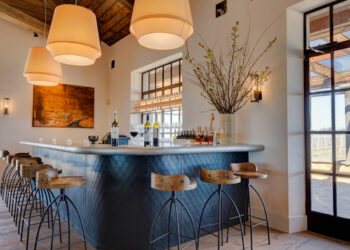
The future is always in front and somewhat unknown. We live in the now, but the past is a collection of lessons learned and hopefully preserved to be remembered for pretext and guidance.
The east end is chock full of vibrant history and a wonderful now and, I believe, a promising future. My east end journalistic journey of the last twenty years has awarded me the opportunity to investigate, interview, and get to observe the events, the folks and the ways of life of the east end. I have been able to report from Speonk to Montauk.
They call the whole collection of east end hamlets and villages, the Hamptons. No one exactly knows when or how all the towns became known as just the Hamptons. Although the use of the phrase “the Hamptons,” can be reportedly traced to 1879, when “The New Long Island. A Handbook of Summer Travels,” was printed by William Mackay Laffan. Eventually in the 1880s, the “grey lady,” herself, that being, The New York Times, began to refer to the east end of the south fork as the “the Hamptons.”
The first settlement, Southampton (1640), is named after the town of Southampton in England. Each hamlet has its own identity and character. The pop singer, Rod Stewart, while performing at a Southampton College benefit once said, “ …there is so much going on the place is plural, not Hampton, but the Hamptons!” I believe he is right.
In the beginning, east end historians such as Henry Hedges used to say that East Hampton and Southampton were whaling, farming and fishing communities. Although the Long Island Railroad didn’t reach Montauk until 1896, it did go all the way to Bridgehampton in1870, just a few years after the end of the Civil War.
There is Speonk, a hamlet that was also referred to as Remsenburg, after Charles Remsen who way back donated a new Presbyterian Church. Now both names are used, however with each name covering different areas of the community. To many in the know, this area is the new “Unhamptons,” now that Montauk is becoming gentrified from a blue-collar fishing town to a more upscale, affluent residential area.
How often do folks talk about their summer home in Flanders? There are wonderful vacation homes and estates in Flanders. It is the Southampton town that has the Big Duck, but it also has estates along with a population of 5,750 according to the 2019 census. The founding of Flanders dates back to just after the American Revolution in 1794. The first Flanders post office was established in 1834!
Another secret of the Hamptons is the beauty, majesty and expansiveness of the old historic Mecox farms and homes. It may be the most exclusive hamlet of the Hamptons besides being the summer home of folks like David Rockefeller Jr., whose dad preferred his team horse trail estate in Bar Harbor, Maine.
Many times, I get asked where is the best place to live in the Hamptons or what is your favorite place in the Hamptons? It’s a difficult question to answer. Each section is a jewel somehow in its own individual way.
Some may like the tall pine forests and woods of the Northwest Woods. Others may love the horse farms areas of Bridgehampton, Sagaponac, and the back sections of Amagansett. Others prefer the small-town feelings of Sag Harbor, East Hampton Village or Southampton Village. Many are drawn to the remoteness of Montauk while others love the privacy of Noyac. Then there is North Haven, where Jimmy Buffet flies his seaplane into and out of his estate. The Springs is so diverse, private, and quiet as is Wainscott.
How does one answer the question what is the best place in the Hamptons? Perhaps by saying, anywhere there on a sunny summer’s day with a pleasant sea breeze blowing through some wonderful natural shade.












